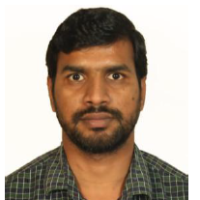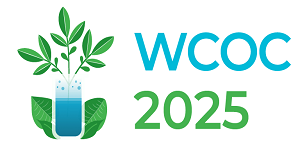2nd World Congress on
Organic Chemistry
August 04-05, 2025 | Online
WCOC 2025

Ajeet Chandra, Korea South
Abstract:
Ortho-iodoxybenzoic acid (IBX) and Dess–Martin periodinane (DMP) are both hypervalent iodine(V) reagents widely employed in various oxidative transformations involving substrates such as alcohols, amines, imines, phenols, and naphthols. These reagents are considered environmentally friendly and readily accessible, often providing excellent yields, which makes them a promising candidate in synthetic organic chemistry for selective oxidative processes. Notably, they offer an advantage by eliminating the need for transition metals, and most transformations proceed efficiently at room temperature. In this work, I present the oxidative transformation of thiols using IBX and DMP (Org. Lett. 2023, 25, 6256– 6261). While oxidation of thiols with an equivalent of IBX at room temperature has previously been reported to afford disulfides within a short reaction time. Further exploration with DMP revealed its remarkable selectivity for converting thiols to thiosulfonates under mild conditions in a short period. Additionally, when thiols are treated with IBX over extended periods and with modified reaction conditions, a mixture of disulfides and thiosulfonates is formed. By optimizing this protocol—using an excessive amount of IBX and prolonged reaction times—selective formation of thiosulfonates is achieved, proceeding via disulfide intermediates. Interestingly, benzyl thiols undergo highly selective oxidation to yield both thiosulfonates and benzyl benzoates. The formation of benzyl benzoates introduces a novel application for subsequent functional group transformations into alcohols, aldehydes, and other derivatives. This newly established approach holds significant promise for future developments in synthetic methodology.
Biography:
Dr. A. Chandra completed his doctoral program at the Department of Chemistry under the excellent supervision of Prof. J. N. Moorthy at the Indian Institute of Technology (IIT) Kanpur, India. He started his career in research after a post-graduation specialization in organic chemistry by joining a doctoral program in the Department of Chemistry at IIT Delhi, India, and started exploring the area of peptide and dendrimer chemistry. Further, he moved to IIT Kanpur, and his doctoral program was in synthetic methodology using oxidizing hypervalent iodine (V) reagents, Oxone, etc. The substrates were employed for the oxidative transformations: olefins, indoles, thiols, naphthols, alcohols, etc. Afterward, he joined the IIT Bombay and explored the asymmetric synthesis using asymmetric amines and also novel aromatic heterocycles using the sulfonylphthalides at ambient temperature conditions. Presently, Dr. A. Chandra is appointed to a research professor position at the Department of Information Display at Kyung Hee University, Seoul. At this time, he is exploring the BODIPY- and MR-TADF-derived organic display materials. Currently, he is also developing the red and green display materials for the real display applications. He aimed to explore the highly efficient display materials for commercialization purposes. He has authored comparative organic chemistry books designed to support preparation for national exams (NET and GATE). Also planning to submit a manuscript for the international textbook in organic chemistry in the near future. The books have an interesting representation of the reaction mechanism, which can provide a better understanding to solve the complex problem of organic chemistry in an easier approach
